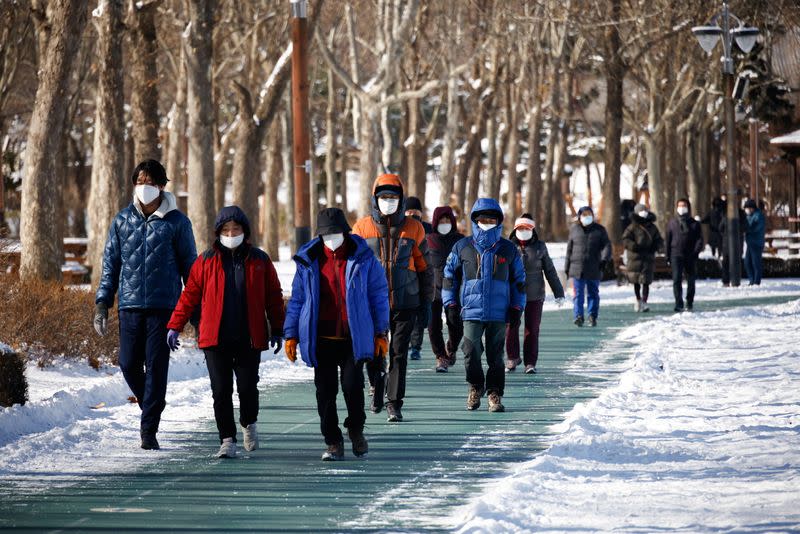By Sangmi Cha
SEOUL (Reuters) – Medical experts say the governor of South Korea is not taking the necessary steps to achieve its goal of achieving collective immunity to coronavirus through mass vaccinations by November.
They say the government has failed to secure enough vaccines and has also been slow to train employees for storage, distribution and inoculation. He was also slow to make decisions about vaccination sites, they said.
The government’s schedule – which foresees vaccination of important individuals to start in February, with 32 million to 36 million people vaccinated by September – is unlikely to be successful at the current rate, experts said.
To achieve the September target, the government would need 4,000 doctors to serve at least 400,000 people a day, said Jun Byung-yool, a former director of the Korean Centers for Disease Control and Prevention.
“The government ordered each local government to ensure its own workforce, but rural areas would not have medical staff and infrastructure to carry out the vaccines,” said Jun.
“It is simply impossible to vaccinate 400,000 people a day.”
Facing public criticism that vaccination acquisition plans have been too slow as the country struggles to contain a third wave of the pandemic, President Moon Jae-in on Monday tried to reassure residents.
“I think we will achieve full herd immunity by November at the latest,” he said at a news conference.
South Korea secured 106 million doses to allow coverage for 56 million people, more than its population of 52 million, from four drug manufacturers – AstraZeneca, Pfizer Inc, Johnson & Johnson’s Janssen, Moderna Inc – and the scheme WHO COVAX vaccine sharing system.
Health officials acknowledge that there are major obstacles, but said their schedule was based on the need to learn from vaccine programs in other countries. In the end, South Korea would complete its vaccination efforts as fast or faster than many other places, they said.
“The estimated size of vaccination centers and the workforce can vary depending on the size of the city, county or district population,” said KDCA director Jeong Eun-kyeong at a news conference. “We are making detailed guidelines for the operation of the sites.”
Doctors said it would take 30 minutes to an hour for each person to register, be examined and wait for any anaphylactic reaction after the injection.
Choi Jae-wook, of the Korean Medical Association, said he did not believe that collective immunity would be achieved until November because of the vacant vaccine arrival time and because the approximately 250 public health clinics across the country will not be sufficient to administer the vaccines.
“The government has just released an ambiguous schedule of quarterly arrivals. Vaccines that need cold chain storage need specific forms of treatment, but preparations cannot be made,” said Choi.
Vaccinating the elderly with underlying diseases is another problem, as special measures must be taken, said Eom Joong-sik, professor of infectious diseases at Gil Medical University at Gachon University.
(Reporting by Sangmi Cha; Editing by Angus MacSwan)
